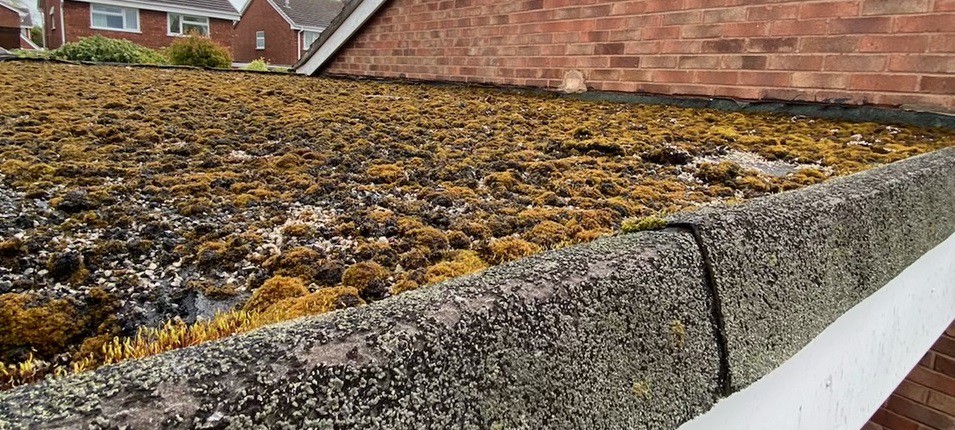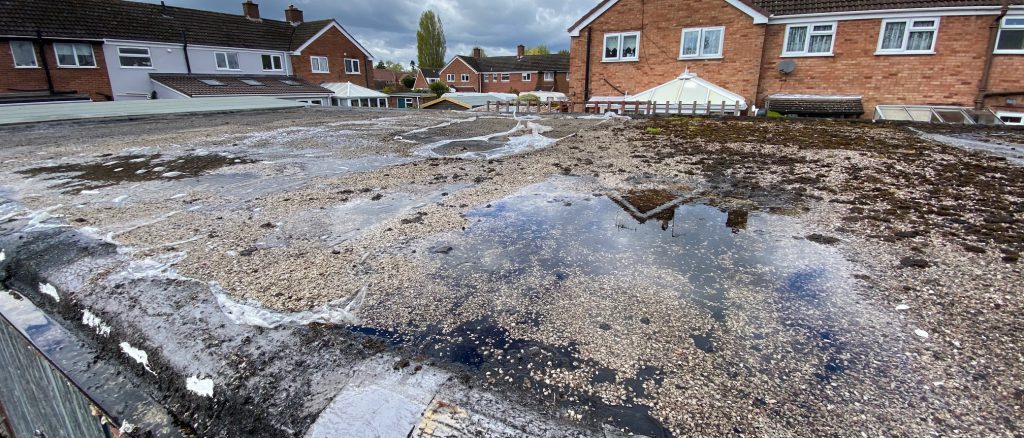A flat roof can often be overlooked until it’s too late, and a quick repair can only do so much for so long.
We aim to explore some of the tale tell signs of when its time to get a new flat roof, and different types of flat roof you may consider.
Here are 5 key signs you may need a new flat roof:
Bubbling and blistering – Bubbling and blistering is a very common problem with flat roofs, often the result of trapped pockets of air and moisture within the roof’s membrane. When the roof’s felt is exposed to excessive heat, this then causes the pockets to expand under the felt, bursting though the felt and causing splits and cracks.
Tears, splits and cracks in the material and even exposed timbers – Visual damage such as tears, splits, cracks and exposed timber is a sure sign you are ready for a new roof. Leaving a flat roof in this state can cause serious damage to the structure of your roof, and risks causing the timbers to rot after over exposure to the elements.
Excessive ponding or pooling on the surface – What causes a pool of water to appear on a flat roof is a process called “ponding”. Ponding occurs when excess waters that is left on a rooftop after a downpour is unable to drain away and remains for 24-48 hours. Small puddles are often nothing to worry about, however large pools of water could cause damage if left untreated. Read our blog about the risks of pooling and when it can become a problem.
Moss and vegetation growth – Otherwise known as organic growth, moss and algae love to grow anywhere which is damp and shaded, making rooftops and gutters the perfect place to grow, particularly if there are overhanging trees nearby. This organic growth on the rooftop will often prevent correct drainage on the rooftop and retain water, causing excessive damage to the rooftop overtime as the water freezes and expands during the winter months. Read our blog about the risks of moss on your rooftop and what you can do to remove it.
Detachment from adjoining walls and upstands – The most important factor to consider when assessing the condition of your flat roof is ensuring the felt of the flat roof is properly chased into adjoining walls and sealed making it watertight. If gaps appear between the felt and the adjoining walls, you will need to consider a new roof rather than a simple repair.
How can my flat roof be replaced?
Traditional flat roof method
Glass fiber or polyester felts are a traditional method which can be laid with traditional pour and roll hot bitumen. This method is no longer used by many roofing contractors due to health and safety risks handling boiling hot bitumen.
Torch on felt is another traditional method, however, do not require pour and roll. Instead the bitumen is already manufactured onto the roll and heated prior to being rolled onto the decking making it much safer.
Newer flat roof methods
Newer methods of laying a flat roof include EPDM Rubber or single ply grp (fibre glass) roof systems.
New systems can cost more than traditional flat roof systems, however typically a contractor will give 5-10 years on a traditional felt roof, but over 20 years + on newer methods such as a EPDM rubber roof or a single ply grp as they are developed with new, more robust technology and materials.
It is always advisable to get a few quotes for different systems when considering replacing your flat roof.
Alternatively, you may consider converting your flat roof into a pitch roof, and speaking to your roof contractor to see if it is possible.
Send in the professionals!
If you need advice on your flat roof, and can’t decide on if you need a replacement or a repair, Kidderminster Roofing Contracts ltd can help! We can offer a free, no obligation quotation for any upcoming repair or replacement you have.
Tel: 01562 748270
Email: office@kidderminsterroofing.com
Or drop us a message on Facebook!








